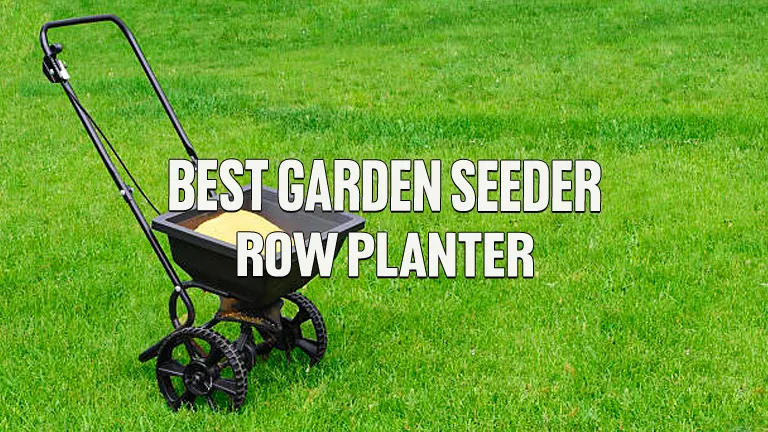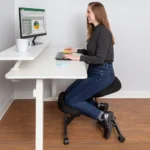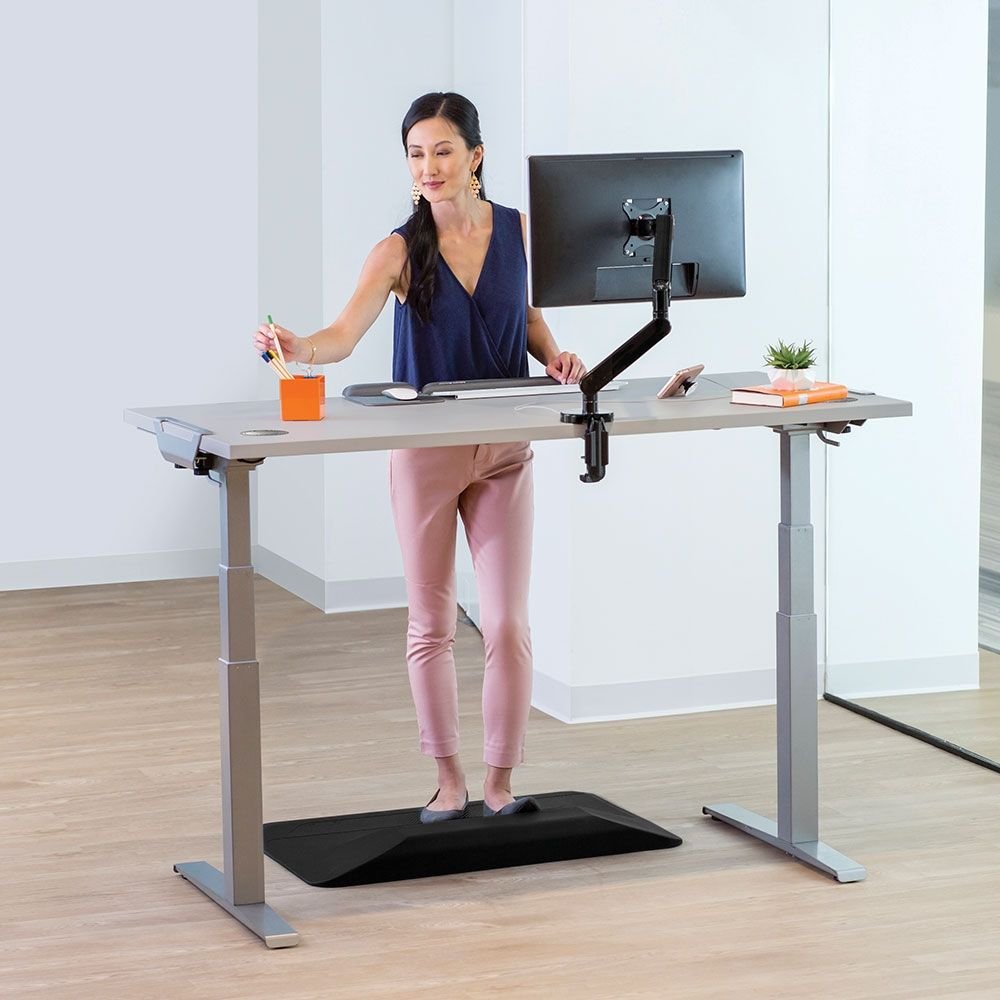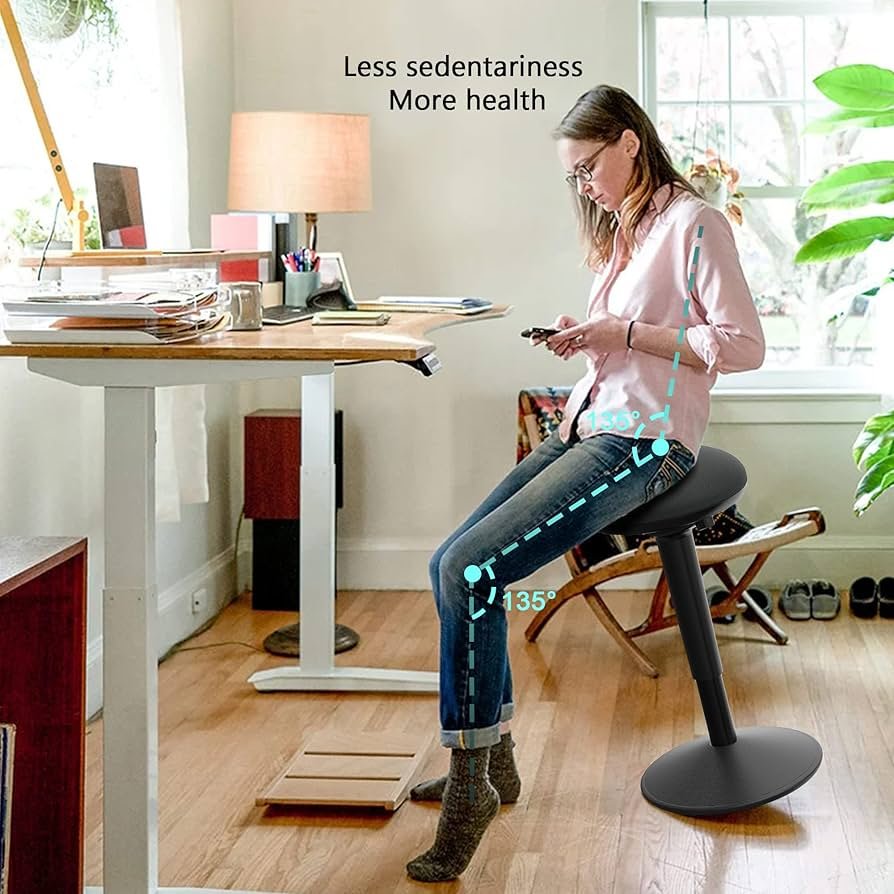Garden seeders are indispensable tools for both amateur and professional gardeners. These devices, designed to aid in the precise planting of seeds, offer a variety of benefits that can significantly enhance gardening efficiency and outcome.
By automating the seed planting process, garden seeders help ensure that seeds are spaced consistently and sown at the correct depth. This not only improves germination rates but also leads to more uniform plant growth.
One of the primary advantages of using a garden seeder is the reduction of physical strain. Traditionally, planting seeds can be a labor-intensive task, involving repetitive bending and stooping.
The best garden seeders mitigate this by allowing gardeners to plant seeds while standing, thereby reducing the risk of back pain and other physical discomforts associated with manual seeding.
Furthermore, garden seeders can significantly speed up the planting process, making it possible to cover larger areas in a shorter amount of time.
There are several types of garden seeders available on the market, each designed to cater to different gardening needs. Handheld seeders are ideal for small-scale gardens and precise seed placement, whereas push seeders are more suitable for larger garden plots.
For even bigger projects, tractor-mounted seeders can be an excellent choice. Each type of seeder offers unique features and capabilities, making it essential to select the one that best fits your specific gardening requirements.
In essence, garden seeders offer a blend of efficiency, consistency, and ease of use, making them a vital addition to any gardener’s toolkit.
Whether you are planting a small vegetable patch or a vast field, choosing the best garden seeder can make a world of difference in your gardening experience and the health of your plants.
Types of Garden Seeders
When selecting the best garden seeder for your gardening needs, it is crucial to understand the different types available. Garden seeders can generally be classified into three main categories: manual seeders, push seeders, and mechanized seeders. Each type has unique features and advantages, catering to various gardening scales and requirements.
Manual Seeders: Manual seeders are the simplest and most cost-effective type of garden seeder. These devices are typically hand-held and allow gardeners to plant seeds with precision. They are ideal for small gardens or specific areas where detailed planting is required.
A common example is the jab planter, which allows for accurate seed placement while minimizing soil disturbance. Due to their simplicity, manual seeders are best suited for hobbyists and small-scale gardening projects.
Push Seeders: Push seeders, also known as walk-behind seeders, are a popular choice for medium-sized gardens and small farms. These seeders are equipped with a wheeled mechanism, making them easy to maneuver.
One of the main advantages of push seeders is their ability to plant seeds at consistent depths and spacing, which can significantly enhance crop uniformity. Popular models, such as the Earthway Precision Garden Seeder, offer interchangeable seed plates, allowing gardeners to plant a variety of seed types efficiently.
Push seeders strike a balance between ease of use and planting precision, making them ideal for enthusiastic gardeners seeking a more systematic approach.
Mechanized Seeders: For large-scale gardening and commercial agricultural operations, mechanized seeders are the top choice. These advanced machines can cover extensive areas quickly and with high precision.
Mechanized seeders can be tractor-mounted or self-propelled, and they often feature sophisticated technology, such as GPS guidance and automated depth control. Examples include the John Deere 7000 series planters, which are renowned for their efficiency and reliability.
Although mechanized seeders require a significant investment, they offer unparalleled planting speed and accuracy, making them indispensable for large farming enterprises.
In conclusion, understanding the different types of garden seeders is essential for choosing the best garden seeder tailored to your specific needs. Whether you are a home gardener, a small-scale farmer, or a commercial grower, there is a suitable seeder that can help you achieve optimal planting results.
Key Features to Look for in a Garden Seeder
When selecting the best garden seeder, several key features should be taken into account to ensure optimal performance and efficiency. One of the most important aspects to consider is the adjustable planting depth.
This feature allows you to set the depth at which seeds are planted, accommodating different types of seeds and soil conditions, ultimately promoting better germination and growth.
Seed spacing options are another crucial element. A garden seeder with multiple spacing settings enables precise control over the distance between seeds.
This can significantly impact plant health and yield by ensuring each plant has adequate space to grow. For gardeners focused on maximizing their garden’s productivity, this feature is indispensable.
Ease of use is an often-overlooked but essential characteristic. A user-friendly garden seeder with ergonomic handles and intuitive controls can save considerable time and effort. Look for models that require minimal assembly and adjustments, as this can streamline your planting process and reduce potential frustrations.
Durability is a key consideration, particularly for those who plan to use the seeder extensively or in challenging conditions. High-quality materials and robust construction will ensure that the seeder withstands regular use and remains functional over multiple seasons.
Stainless steel components and weather-resistant finishes can be indicators of a durable garden seeder.
Hopper capacity is another feature to evaluate. A larger hopper can hold more seeds, reducing the frequency of refills and allowing continuous operation over larger areas. This can be particularly beneficial for those with extensive gardens or commercial operations, where efficiency is paramount.
When prioritizing these features, consider your specific gardening needs. For instance, if you have a small garden, ease of use and seed spacing options might take precedence over hopper capacity. Conversely, for larger plots, durability and adjustable planting depth could be more critical.
By carefully assessing your requirements and the available features, you can select the best garden seeder that will optimize your planting process and yield the best results.
Top Garden Seeders on the Market

When it comes to selecting the best garden seeder, there are a variety of models available to suit different gardening needs. Here, we have compiled a list of some of the top garden seeders on the market, along with their key specifications, pros, and cons.
1. Earthway 1001-B Precision Garden Seeder
This model is designed for precision and efficiency. It features a row marker for evenly spaced rows and interchangeable seed plates for different seed sizes. The Earthway 1001-B is lightweight, making it easy to maneuver.
Pros: Easy to use, versatile seed plates, durable construction.
Cons: May require calibration for optimal performance.
Where to Buy: Available on Amazon and garden supply stores.
Customer Reviews: Generally positive, with an average rating of 4.5 stars.
2. Chapin 8701B Garden Seeder
The Chapin 8701B is known for its ergonomic design and easy assembly. It includes six seed plates and an adjustable row marker. The hopper’s large capacity reduces the need for frequent refills.
Pros: Ergonomic handle, large seed hopper, adjustable row marker.
Cons: Slightly heavier than other models.
Where to Buy: Available at Home Depot and online retailers.
Customer Reviews: Highly rated, with an average of 4.3 stars.
3. Hoss Garden Seeder
This seeder is built for durability and precision. It features adjustable planting depth and spacing options. The Hoss Garden Seeder is compatible with a wide range of seed plates, making it versatile for various types of seeds.
Pros: Sturdy construction, adjustable settings, wide compatibility with seed plates.
Cons: Higher price point.
Where to Buy: Available on the Hoss Tools website and select garden centers.
Customer Reviews: Excellent reviews, with an average rating of 4.7 stars.
4. Precision Products Garden Seeder
This seeder is ideal for small to medium gardens. It includes multiple seed plates and a rear wheel for added stability. The Precision Products Garden Seeder is praised for its ease of use and accurate planting.
Pros: Easy to assemble, stable design, accurate planting.
Cons: Limited to small to medium-sized gardens.
Where to Buy: Available at Lowe’s and online platforms.
Customer Reviews: Positive feedback, with an average rating of 4.4 stars.
Each of these models offers unique features to cater to different gardening needs. Whether you are looking for precision, ease of use, or durability, there is a best garden seeder to meet your requirements.
How to Use a Garden Seeder Effectively
Using the best garden seeder can significantly enhance the efficiency and accuracy of your planting process. To achieve optimal results, it is essential to follow a few practical steps and understand the nuances of operating a garden seeder.
Proper soil preparation, seed selection, seeder setup, and planting techniques are crucial components of this process.
Firstly, ensure the soil is well-prepared. A fine, loose soil texture allows for easier seeding and better germination. Remove any large clumps, rocks, or debris from the planting area. If necessary, till the soil to achieve the desired consistency. Ensuring the soil is adequately moist but not waterlogged is also vital for effective seeding.
Next, select the right seeds for your garden. Depending on the type of garden seeder you are using, different seeds may require different settings or attachments. For instance, larger seeds may need a different hopper setting than smaller ones. Carefully read the seed packet instructions to determine the appropriate planting depth and spacing.
Setting up the garden seeder is the next important step. Adjust the seeder according to the seed type and desired planting depth. Most garden seeders come with adjustable settings that allow you to control the seed spacing and depth accurately. Fill the hopper with seeds, ensuring it is not overfilled to avoid clogging.
When planting, push the seeder at a steady pace to ensure even seed distribution. Start at one end of the row and move in a straight line to the other end. Consistent speed helps maintain uniform seeding, which is critical for crop uniformity and yield. If you notice any skips or missed spots, run the seeder over those areas again to ensure complete coverage.
To maintain the best garden seeder for long-term use, regular cleaning and maintenance are essential. After each use, clean the hopper and seed plates to remove any residual seeds or debris. Lubricate moving parts as recommended by the manufacturer to prevent rust and ensure smooth operation.
Troubleshooting common issues such as seed clogging or uneven seeding can usually be resolved by checking for blockages or adjusting the settings.
By following these steps, you can effectively use a garden seeder to achieve precise and efficient planting, leading to a productive and well-maintained garden.
Benefits of Using a Garden Seeder
Utilizing a garden seeder offers significant advantages that can transform the planting experience. One of the primary benefits is enhanced planting accuracy. Garden seeders are designed to dispense seeds at precise intervals and depths, ensuring uniformity.
This precision eliminates the common issues of overcrowding or gaps, ultimately fostering healthier plant growth. With the best garden seeder, gardeners can achieve a level of consistency that is challenging to accomplish manually.
Time-saving is another critical benefit. Manual seeding can be labor-intensive and time-consuming, especially for larger gardens. A garden seeder streamlines the process, allowing gardeners to cover more ground efficiently.
This efficiency is particularly advantageous during planting seasons when time is of the essence. By reducing the effort and time required, garden seeders enable gardeners to focus on other essential tasks, such as watering and fertilizing.
Moreover, the use of a garden seeder can significantly reduce labor. Traditional seeding methods often involve extensive bending, kneeling, and repetitive movements, which can lead to physical strain and fatigue.
A garden seeder alleviates these issues by automating the seeding process. This not only makes gardening more enjoyable but also opens up the activity to individuals who might otherwise be deterred by the physical demands of manual seeding.
The positive impact on crop yields and garden health cannot be overstated. Uniform seed placement ensures that each plant has adequate space to grow, reducing competition for nutrients and sunlight. This optimal spacing promotes robust plant development and can lead to higher yields.
Additionally, consistent seeding helps prevent the spread of diseases and pests, contributing to overall garden health.
Testimonials from experienced gardeners highlight the transformative effects of using a garden seeder. For instance, Jane, a seasoned gardener from Ohio, noted, “Switching to a garden seeder dramatically improved my planting efficiency and crop results.
I noticed a marked increase in yield and a reduction in the time spent on seeding.” Similarly, Tom from California shared, “The garden seeder has made my gardening experience much more enjoyable and less physically taxing. It’s a game-changer for anyone serious about their garden.”
DIY Garden Seeders: Pros and Cons
Creating a DIY garden seeder can be an appealing option for gardening enthusiasts seeking cost-effective and customized solutions. One of the primary advantages of a DIY garden seeder is the potential for significant cost savings.
Commercial seeders can be quite expensive, while building your own often involves using readily available materials like plastic bottles, PVC pipes, and wooden sticks, which can be sourced inexpensively or repurposed from household items.
Another benefit is the customization potential. With a DIY garden seeder, you can tailor the design to suit your specific gardening needs. For instance, if you have a small garden with limited space, you can create a compact seeder that fits perfectly into your garden beds.
Likewise, if you are planting various seed types, you can modify your seeder to handle different seed sizes and soil conditions, offering a level of flexibility that some commercial models may not provide.
Several simple DIY seeder projects can serve as excellent starting points. A basic example involves using a plastic bottle with holes punctured at regular intervals to dispense seeds evenly as you walk along your garden rows.
Another project might involve constructing a seeder from PVC pipes and a funnel to create a more precise seed distribution mechanism. These projects typically require minimal tools and materials, making them accessible to most gardeners.
However, there are some potential downsides to consider. Building a DIY garden seeder can be time-consuming, especially if you are not experienced with crafting or lack the necessary tools. The trial-and-error process to achieve optimal functionality can be frustrating and might result in inconsistent seed spacing or depth.
Additionally, DIY seeders may lack some of the advanced features found in commercial models, such as adjustable seed plates or ergonomic designs, which can enhance planting efficiency and ease of use.
Ultimately, while a DIY garden seeder offers a cost-effective and customizable solution, it may come with limitations in functionality and require a significant time investment. Gardeners should weigh these factors carefully when deciding whether to build their own seeder or invest in a commercial model.
Conclusion and Final Recommendations
In our comprehensive guide to selecting the best garden seeder, we have explored various aspects that are crucial for making an informed decision. From understanding different types of garden seeders to evaluating features such as precision, ease of use, and durability, each factor plays a pivotal role in finding the ideal tool for your gardening needs.
Choosing the right garden seeder significantly impacts the efficiency and success of your planting activities. For small gardens or hobby gardeners, a simple, hand-operated seeder might be sufficient. Models like the Earthway Garden Seeder offer excellent precision and ease of use.
On the other hand, for larger gardens or commercial operations, a more robust, tractor-mounted seeder such as the John Deere 71 Flex Planter provides the necessary power and versatility to handle extensive planting tasks.
When making your selection, it is essential to consider your specific requirements. Assess the size of your garden, the types of seeds you intend to plant, and your budget. Additionally, user reviews and expert recommendations can provide valuable insights into the performance and reliability of different models.
Ultimately, the best garden seeder for you is one that aligns with your gardening goals and preferences. We encourage you to thoroughly evaluate your options, keeping in mind the features and benefits discussed in this guide.
Investing in the right garden seeder will not only streamline your planting process but also contribute to healthier, more bountiful harvests.
We invite you to share your experiences and insights in the comments section below. Whether you have questions or additional tips to offer, your participation enriches our gardening community. Happy planting!









